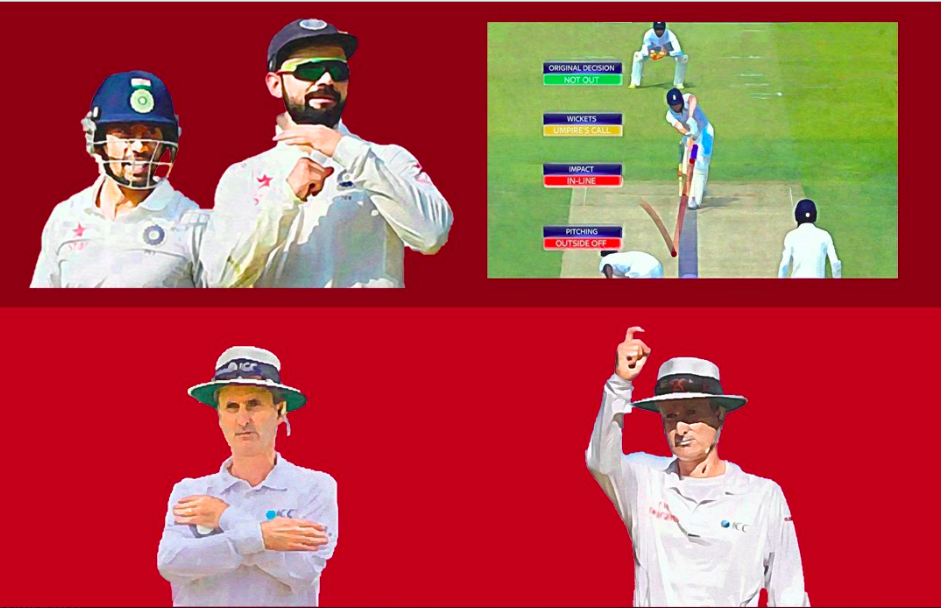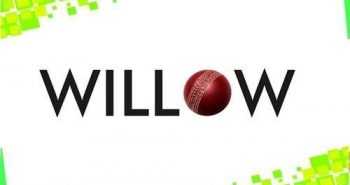The umpire’s Choice Evaluation System (DRS) is a significant innovation in cricket. Not solely it provides viewers an concept in regards to the accuracy of an umpire’s determination, nevertheless it additionally helps curb fallacious selections made by umpires, which principally are widespread human errors.
Though it has made life simpler for each cricket and cricketers, it has piled extra strain on umpires, who these days need to be further cautious whereas making selections. Widespread use of expertise has left umpires with a minimal room for errors. In the meantime, fallacious selections, as confirmed by the expertise, generally put umpires in a considerably dangerous gentle.
In consequence, to understandably protect the integrity of umpires, the Worldwide Cricket Council (ICC) has launched the idea of “umpire’s name”, which provides a marginal benefit to the umpires for his or her selections. Nonetheless, there have been debates concerning this specific idea, with many arguing that the decision is mindless.
Is it actually so? Allow us to examine.
How does DRS work?
For starters, the DRS includes a batsman or the bowling aspect interesting towards a call made by the umpire. It’s primarily used for caught-behind and leg-before wicket (LBW) selections.

Following the attraction, the choice is referred to the third umpire, who checks the identical utilizing totally different digital camera angles and applied sciences, like Extremely edge, Hawk-eye, and Hotspot. Whereas the third umpire provides an precise verdict of out/not out for the caught-behind attraction, the LBW includes an extra determination, referred to as the umpire’s name.
How does umpire’s name work?
The umpire’s name includes upholding the choice made by the on-field umpire in case of shut LBW calls, the place plainly the ball would possibly or may not have hit the stumps. For instance, in case the Hawk-eye means that the likelihood of the ball hitting the stumps, in proportion phrases, is decrease than that of lacking the stumps, the umpire’s name comes into play, whereby the umpire has the liberty to retain his authentic determination, i.e. in case the umpire has given it out, the choice stays, or vice versa.

So far as the regulation of LBW in DRS is anxious, it states that no less than 50% of the ball must hit the stumps to rule the batsman out. Nonetheless, whether it is lower than 50%, it’s the place the umpire’s name takes impact.
Authentic LBW regulation by MCC
Now, allow us to contemplate what the precise regulation for LBW is, as said by the Marylebone Cricket Membership (MCC). Based on Wikipedia, regulation 36, that issues the LBW, states, “Following an attraction by the fielding aspect, the umpire might rule a batter out LBW if the ball would have struck the wicket, however was as an alternative intercepted by any a part of the batter’s physique (besides the hand holding the bat).”

Forthwith, it’s to be famous that nowhere within the regulation, the proportion of the ball hitting the stumps is talked about. The rule has been altered and modified for DRS. That is the place the controversy is available in.
The controversy
So far as the controversy goes, critics are cut up on the umpire’s name factor. Whereas many say it’s a honest name to provide a definite benefit to the umpires, some really feel that the decision is mindless, thereby creating a large number.
Just lately, legendary Indian cricketer Sachin Tendulkar, too, mentioned the subject with Windies legend Brian Lara. Tendulkar mentioned, “One factor I don’t agree with, with the ICC, is the DRS they’ve been utilizing for fairly a while. It’s the LBW determination the place greater than 50% of the ball should be hitting the stumps for the on-field determination to be overturned. The one purpose they (the batsman or the bowler) have gone upstairs is that they’re sad with the on-field determination.
So, when the choice goes to the third umpire, let the expertise take over; identical to in Tennis – it’s both in or out, there’s nothing in between.”
“Anyone is sad with the on-field determination and that’s the solely purpose they’ve gone upstairs, to the third umpire. And, when that occurs, let the expertise take over. Identical to in tennis, it’s both in or out, there’s nothing in between. After you have determined to make use of expertise, then you definitely depend on it,” he added.
What % of the ball hits the stumps doesn’t matter, if DRS exhibits us that the ball is hitting the stumps, it must be given out, whatever the on-field name. That is the motive of utilizing expertise in Cricket. As we all know expertise isn’t 100% proper however neither are people.#ENGvWI pic.twitter.com/8At80AtRs5
— Sachin Tendulkar (@sachin_rt) July 11, 2020
Comparability with tennis and rationalization
So far as Tendulkar’s reference to tennis goes, the Hawk-eye is used within the sport to find out the place the ball landed, i.e. whether or not the ball touched the sideline or the baseline. Additionally, the proportion system isn’t utilized in tennis, as even one p.c of the ball touching the road is taken into account as In.

Now in LBW, issues are somewhat totally different. Whereas the process is similar, ranging from the bowler releasing the ball to the purpose of affect, it’s the post-impact trajectory that’s questionable. The trajectory is projected based mostly on the pace of the ball.
Nonetheless, many query that the expertise fails to think about the quantity of spin generated by the bowler. Additionally, one other issue that, I imagine, may play an enormous function is the wind pace, which may certainly affect the ball trajectory.
Due to this fact, based mostly on the above evaluation, it actually is smart that the umpires are given a particular benefit on this state of affairs and that the umpire’s name is a legitimate verdict.
Is Hawk-eye utterly unreliable?
I admit that Hawk-eye in cricket isn’t 100% dependable. Nonetheless, is the margin of accuracy actually so low?
Based on the builders, Hawk-Eye Improvements Ltd., based mostly in England, there’s a gentle flaw in expertise. They are saying that the margin of error in Hawk-eye is about 3.6 mm. Whereas many commentators have said that the margin is simply too massive for any sport, some imagine that it’s extra-ordinarily correct.
Additionally, I wish to add that Hawk-eye has come a good distance ever since its introduction in 2001. 19 years is a very long time for expertise to evolve. The arguments towards Hawk-eye may need been a subject of scorching debate throughout its preliminary days, however with the introduction of synthetic intelligence, the expertise has undergone a significant improve, that has utterly modified the panorama, making it able to delivering near-accurate outcomes.
Based mostly on the above, Tendulkar appears to be fairly proper in saying that if the expertise is obtainable, why not use it utterly, reasonably than limiting its scope. Moreover, diluting it with human intelligence makes it much more difficult, as, within the case of umpire’s name, the precise regulation of the sport is violated.
Former Indian off-spinner Harbhajan Singh, too, voiced his assist by tweeting, “Agree with you Paji 1000 per cent right. If the ball is touching the stump or kissing the stumps it must be given out. It doesn’t matter how a lot components of the ball hit the wicket..few guidelines ought to b modified within the recreation for the betterment of the sport..that is actually 1 of these (sic.).”
Agree with you Paji 1000 p.c right.. If the ball is touching the stump or kissing the Stumps it must be given out..It doesn’t matter how a lot a part of the ball hit the wicket..few guidelines ought to b modified within the recreation for betterment of the sport..that is actually 1 of these https://t.co/m1PfaIpR8y
— Harbhajan Turbanator (@harbhajan_singh) July 11, 2020
Additionally, former Check umpire AV Jayaprakash feels that eliminating the umpire’s name is the proper factor. Neither human nor expertise is 100% correct. And, for the reason that umpire, who’s a human being, is discovering it troublesome to make the proper name, it’s the purpose why it’s being referred to the expertise accessible. As soon as referred, expertise will need to have the ultimate say, because it provides a near-accurate image, which is unattainable for a human eye to detect.
What occurs to the umpires then?
Certainly, the umpires would considerably lose their worth if the expertise is totally getting used. However, that’s the explanation why there’s a cap on the variety of referrals for the DRS. In consequence, the umpires would proceed to be within the image as soon as the referrals have lapsed.
Moreover, there are some events the place even the expertise fails to give you a concrete consequence. In such a state of affairs, I imagine that the on-field umpires ought to have the ultimate say, thereby preserving their integrity. Moreover, the higher use of expertise would permit the umpires to get even higher at their jobs, as it will preserve giving them a clearer image of the complete state of affairs.
Allow us to not overlook that the aim of this expertise is to not overshadow umpires and present them in poor gentle, however to maintain the game clear, and that was the only purpose why DRS was launched within the first place.
In short: Umpire’s name in DRS — Not essentially required.


















